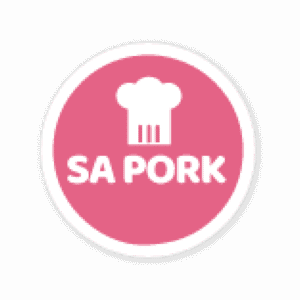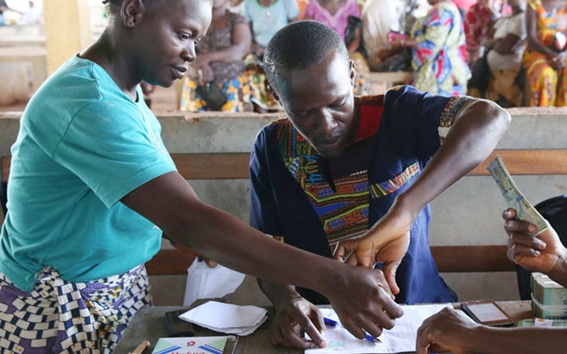Prof LJ Grobler, Director CFAM Technologies, Professor – Faculty of Engineering, North-West University, South Africa
• Africa holds 60% of the world’s uncultivated arable land according to UNDP study of 2012.
• Africa has a population of more than 1.2-billion.
• By 2020 Africa will have a middle class that is more than the middle class of India.
• By 2050 Africa’s population will reach 2-billion.
• By 2050 Africa’s population will reach 2-billion.
• By 2050 Sub-Saharan Africa will need US$940-billion of investments to feed the people. 66% of the investments are needed for the agribusiness and agro-industries’ sectors
Africa has predominantly a resource-based economy with agriculture and mining the most significant sectors. Farm gate prices for fresh produce agricultural products vary typically between 30% and 50% of retail prices (1). For agricultural products like grains that are subjected to primary and secondary processes the farm gate prices compared to retail prices are below 20% and in some instances even below 10%.
Primary and secondary beneficiation or the extension of the value chain beyond the farm gate is therefore widely accepted as the solution to a more sustainable agro-industry.
Unfortunately, in many regions or communities, farmers and agro businesses were unable to extend and own a larger portion of the economic value chain. Most small farmers have been trapped into subsistence farming and face the following challenges:
• Varying commodity prices – prices are low at harvest time when most farmers are forced to sell their crops.
• Quality of the produced grains – these farmers do not have always access to proper harvesting and storage equipment to produce good quality crops. This often led to below grade crops being produced. Toxin and fungi infections that are often related to poor storage could make the crop worthless.
• Access to market through proper distribution networks and channels – the farmers do not have sufficient access to markets and can be exploited by large buyers that force the price of commodities down.
• Markets need a constant supply of the raw materials or crops. Since small farmers’ produce are seasonal, they are unable to provide constant supply of raw materials. This force the market towards large buyers.
• Inability to get discounts due to large quantity buying of input materials.
According to and United Nations Development Programme (UNDP) study Africa does provide private sector opportunities of more than US$10-billion per year in the agro-food industry. Some of these are the following:
• There is a $2-billion cassava starch market in West Africa.
• The supply gap for soya beans and oil seeds in Eastern and Southern Africa is more than 400 000 tons per year.
• West and Southern Africa have a $2-billion market per year for the production of milk concentrate.
• Maize and rice production have a $5-billion market per year.
• Aquaculture/fish production is growing exponentially. This is stimulated also by increased demand from Europe.
• The demand of sorghum for use in breweries is also increasing.
• Nigeria have a $1-billion market in West Africa for fruit concentrate processing.
The opportunities therefore do exist in Africa, but unfortunately development projects often fail. Some of the reasons are the following:
• Insufficient technical and economic knowledge and skills.
• Business has become more demanding and competitive.
• Economies of scale tips the balance in favour of larger businesses.
• Access to markets in terms of quality, consistency and traceability.
• Sufficient and adequate financial support.
• Fluctuating prices for food products.
• Lack of proper guidance, mentoring and support of emerging businesses.
Clusters are seen as one of the options to assist realising the opportunities in Africa. Clustering has been quite successful in strengthening the value chains around the world. Examples of successful clustering are for example the wine industry in the Western Cape where a number of farmers or grape producers own collectively part of the wine cellar that beneficiate the grapes and also handles marketing and distribution of the wines for the members.
The chicken industry established a similar model whereby chicken growers feed and look after the chicks and then sell full grown chickens to common abattoir that again handles sales and distribution.
A similar concept can be applied in the grain and pulses producing environments. Milling was traditionally seen as one of the few beneficiation options. However, the additional value adding due to milling is relatively small. The cost of raw materials in milling plants is around 75% of total expenses.
Extrusion however provides a much more lucrative opportunity. Extrusion is a high pressure continuous cooking process that is used for the production of ready-to-eat or instant foods, feeds, pet foods, aqua feeds and snack foods.
The establishment of regional extrusion plants have a further benefit that it can assist in creating local markets for local producers of grains and crops. Such a plant can enter into supplier agreements with the local farmers, thus creating more secured take off relationships.
Integration of novel cleaning and purification system with the extrusion plant to remove toxins like mycotoxins and alpha toxins provides an ideal solution for Africa. This enables extrusion processing plants to buy locally produced agricultural grains and crops and then clean and purify it to levels suitable for human foods and animal feed products.
Even sub grade grains and crops can now be used and processed into high value end products such as instant porridges, snacks, pet foods and aqua feeds.
Clustering of agricultural producers and linking them to extrusion plants that have strong relationships with food marketing and distribution companies provides a unique opportunity to build stronger and more sustainable value chains. This will create greater access to market, develop stronger distribution networks and channels, facilitate more constant of raw materials and ensure a constant supply of quality processed high value products to the market.
The North-West University (NWU) started in 1998 with the development of a localised twin-screw extruders suited for Africa and developing countries. CFAM Technologies was established in 2007 as a spin-off company of the NWU. More than 70% of all instant maize porridge products that are commercially produced in South Africa are made on CFAM supplied twin-screw extruders.
Extrusion is therefore one of the promising technologies than can assist in building a more sustainable Africa that can take care of its own people. Wider application of extrusion will provide opportunities to feed the hungry, provide more jobs, alleviate poverty and most importantly create an environment where Africa can become more self-sustainable.
(1) National Agricultural Marketing Council – 2015
The South African Pork Producers’ Organisation (SAPPO) coordinates industry interventions and collaboratively manages risks in the value chain to enable the sustainability and profitability of pork producers in South Africa.








